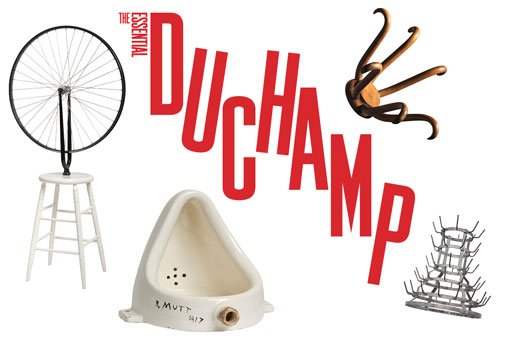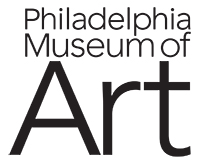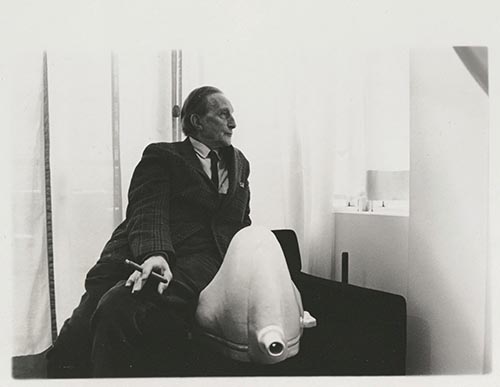On view until 11 Aug 2019
'The essential Duchamp' celebrates the legendary work of artist and provocateur Marcel Duchamp

Marcel Duchamp Bicycle wheel 1964 (replica of 1913 original) Philadelphia Museum of Art; Fountain 1950 (replica of 1917 original) Philadelphia Museum of Art; Hat rack 1964 (replica of 1917 original) National Gallery of Australia, Canberra; Bottlerack 1961 (replica of 1914 original) Philadelphia Museum of Art, © Association Marcel Duchamp/ADAGP. Copyright Agency, 2018
More than a century after Marcel Duchamp’s (1887–1968) readymade Fountain was rejected from display in New York and over five decades since the last significant exhibition of his work came to Australia, the Art Gallery of New South Wales presents The essential Duchamp. This must-see exhibition from the Philadelphia Museum of Art also marks the 50 year anniversary of the artist’s death.
The essential Duchamp is the most comprehensive survey of the art and life of Duchamp ever to be seen in the Asia Pacific region, bringing together over 125 works from the Philadelphia Museum of Art’s world-renowned collection. The travelling exhibition began in 2018 and concludes its tour at the Art Gallery of NSW in Sydney, following on from the Tokyo National Museum, Japan and the National Museum of Modern and Contemporary Art in Seoul, Korea.
Dr Michael Brand, director of the Art Gallery of NSW, said The essential Duchamp features work spanning the artist’s six-decade career, exploring Duchamp’s formative years alongside iconic works and key documentary materials.
“Tracking the achievements of Marcel Duchamp is to map some of the most seismic shifts in 20th century art history. The essential Duchamp reveals the life and work of an artist whose provocative and unorthodox approach dramatically expanded the possibilities for making art.
“Duchamp began building his reputation as a major disruptor of the art world when he exhibited Nude Descending a Staircase (No.2) 1912 at the 1913 Armory Show in New York. Yet, even as this magnificent and innovative take on Cubism established his name, Duchamp’s relentless efforts to challenge conventions saw him abandon painting and embark into uncharted artistic territory including the legendary readymades and the development of Rrose Sélavy, his female alter ego,” Brand said.
“The Philadelphia Museum of Art holds the world’s largest and most significant collection of Duchamp’s work together with an incomparable library and archival holdings relating to the artist, making The essential Duchamp a rare opportunity to experience his work in depth,” Brand added.
Timothy Rub, George D. Widener director and CEO of the Philadelphia Museum of Art said the Museum is proud to partner with the Art Gallery of NSW for a second time to bring another ambitious and innovative exhibition to Sydney, following the success of America: painting a nation in 2013.
“The gift of the Louise and Walter Arensberg collection in 1950, with its great concentration of works by Duchamp, was a landmark event in the history of the Philadelphia Museum of Art establishing it as a world renowned destination for modern art. We are delighted to share it with new audiences in the Asia-Pacific region.
“Duchamp’s reputation has never stood higher than it does at present among artists working around the world. Fifty years after his death the passage of time has seemed only to clarify and to strengthen the argument that his work represents an inflection point in the history of art, the significance of which has not been fully appreciated,” Rub said.
Dr Matthew Affron, exhibition curator and Muriel and Philip Berman curator of modern art at the Philadelphia Museum of Art, said The essential Duchamp tells the story of Duchamp’s making and unmaking as a painter, revealing an influence that continues to resonate.
“Duchamp’s legend has proliferated internationally. His impact is seen today in artists’ engagement with multiples and facsimiles, in critical reflection on the display of art in galleries and museums, and in work that deals with commodity culture or explores the connections between gender, sexuality, and art.
“Duchamp wanted to exclude his personal taste and the technical skill of his hand from his work in order to make ideas paramount and bring forward the intellectual value in art. The essential Duchamp explores his insistent pursuit of independence and freedom in both art and life,” Affron said.
Nicholas Chambers, exhibition coordinating curator and senior curator of modern and contemporary international art at the Art Gallery of NSW, said the exhibition is unprecedented in Australia due to the depth and breadth of the representation of Duchamp’s career.
“From his early paintings as a teenager to his portable museums of miniatures late in life, and including important works that have not before been seen in the Asia Pacific region such as Portrait of Dr. Dumouchel 1910, Sonata 1911, and Chocolate Grinder (No. 2) 1914, this exhibition offers rare insights into the development of both Duchamp’s art and his enigmatic persona,” said Chambers.
The essential Duchamp is accompanied by a richly illustrated publication which tells the artist’s story through four key periods. Written by exhibition curator Matthew Affron with additional contributors: Cécile Debray, director at the Musée de l’Orangerie, Paris; Alexander Kauffman, Andrew W. Mellon–Anne d’Harnoncourt Postdoctoral Curatorial Fellow, Philadelphia Museum of Art; Michael R. Taylor, chief curator and deputy director for art and education, Virginia Museum of Fine Arts, Richmond and John Vick, collections project manager, Philadelphia Museum of Art.
Marcel Duchamp 'Portrait of the artist's father' 1910 Philadelphia Museum of Art, Louise and Walter Arensberg Collection, 1950-134-49 © Association Marcel Duchamp/ADAGP. Copyright Agency, 2019.
The Essential Duchamp, organized by the Philadelphia Museum of Art, will present a rich and engaging account of the life and work of one of the most original and influential artists of the twentieth century, Marcel Duchamp (1887–1968).
Marcel Duchamp profoundly changed the way in which we think about the creation and interpretation of art. He earned his celebrity a century ago when his painting Nude Descending a Staircase (No. 2) (1912) was exhibited at the groundbreaking Armory Show in New York, where it sparked reactions ranging from admiration to outrage. Twenty-five years later, Duchamp observed to an interviewer that the painting and its scandal had in some ways overtaken his story, leaving him "only a shadowy figure behind the reality of that painting." Our understanding of his complaint must be tempered, however, by the knowledge that Duchamp preferred to glide in relative silence through the world of the avant-garde. An aura of mystery was fundamental to his persona.
Organized by Matthew Affron, the Muriel and Philip Berman Curator of Modern Art at the Philadelphia Museum of Art, the exhibition will consist of approximately one hundred and forty works of art and important archival and documentary items, nearly all drawn from the Museum's collection. It will be arranged as a survey of Duchamp's more than sixty years of activity as an artist. Threaded throughout the exhibition and central to its narrative structure will be the story of Duchamp's life in France and the United States. The exhibition will be divided into four sections.

1. A Painter’s Life
Duchamp took up painting as an adolescent in the summer of 1902, and
for the next eight years he drifted among various idioms of innovative
art: Impressionism, Symbolism, and Fauvism. This modernist
apprenticeship led to a brief but extremely original engagement with
Cubism and the production of numerous important works including Nude Descending a Staircase (No. 2)
(1912), the composition that had a scandal at the Armory Show in New
York and made its author an art celebrity in the United States. But in
the autumn of 1912, the twenty-five-year-old Duchamp to a momentous
decision: he resolved to abandon the painter's craft and seek new ways
of working. The first chapter in the life and the work of Marcel Duchamp is the story of his making and unmaking as a painter.
Nude Descending a Staircase (No. 2)
Marcel Duchamp
1912
Philadelphia Museum of Art.
The Louise and Walter Arensberg Collection, 1950
Marcel Duchamp
1912
Philadelphia Museum of Art.
The Louise and Walter Arensberg Collection, 1950
2. "Can Works be Made Which are Not ‘Of art’?"
Starting in 1912 Duchamp worked toward the execution of his magnum opus, The Bride Stripped Bare by Her Bachelors, Even
(1915-23), a picture on glass that overturned the ground rules of
painting as conventionally understood. In 1913, the first of his
so-called readymades came into being. Readymades, functional objects
deprived of their utilitarian identity, blurred the line between fine
art and mass production and challenged commonsense notions about the
priority of the artist's hand and the difference between original and
copies in art. In 1915, Duchamp emigrated to New York City. It was there, in 1917, that a notorious object entitled Fountain triggered the first public discussion of the idea of the readymade.
*Readymades
The Philadelphia Museum of Art holds 6 readymades out of 12 crated by Duchamp. From the collection, this exhibition will present Bicycle Wheel, Bottle rack, and Fountain.
*The Bride Stripped Bare by Her Bachelors, Even ("The Large Glass")
*The exhibition will show the 1980 replica (Komaba Museum, The Universty of Tokyo) of the 1915–1923 original
This famous work was left unfinished after Duchamp worked on it from 1915 to 1923. The glass was accidentally shattered after the work’s first public display at the Brooklyn Museum in 1926. Duchamp repaired The Large Glass and accepted the cracks as part of the work.
The Philadelphia Museum of Art holds 6 readymades out of 12 crated by Duchamp. From the collection, this exhibition will present Bicycle Wheel, Bottle rack, and Fountain.
*The Bride Stripped Bare by Her Bachelors, Even ("The Large Glass")
*The exhibition will show the 1980 replica (Komaba Museum, The Universty of Tokyo) of the 1915–1923 original
This famous work was left unfinished after Duchamp worked on it from 1915 to 1923. The glass was accidentally shattered after the work’s first public display at the Brooklyn Museum in 1926. Duchamp repaired The Large Glass and accepted the cracks as part of the work.
3. Rrose Sélavy
Duchamp spent the better part of the interwar period based in Paris.
Having already abandoned the activity of painting, he now shifted his
professional energies to playing chess. But he also invented an artistic
female persona named Rrose Sélavy, and used this assumed identity to
pursue new activities in the art world. Duchamp pursued experiments in
word-play (puns and verbal games) and also made unconventional art works
based upon his long study of the principles of perspective and optics.
These concerns dovetailed in "Anemic Cinema", the short avantgarde film
he produced in 1926 with the assistance of his frequent accomplice, the
photographer Man Ray. Meanwhile, by the mid-1930s, Duchamp had become
more and more interested in an outgrowth of the readymade idea, namely
the notion of producing and marketing replicas in limited editions of
his earlier and more recent works. This idea led to the painstaking
fabrication of a portable museum of miniature replicas, (From or by Marcel Duchamp or Rrose Sélavy Box in a Valise)
(1935–41). Throughout the interwar period, and then once again as a
wartime emigre in New York, Duchamp also worked as a fellow traveler of
the international Surrealist group (Duchamp became an American citizen
in 1955).
4. Our Lady of Desire
In the final two decades of his life, Duchamp achieved legendary
status, first among artists and art-world insiders and then in the
broader culture. During this same period, he went almost totally
underground as an artist. Working in near-total secret within his New
York studio, he created his final masterpiece, Étant donnés
(1946–66). This room-sized, three-dimensional construction built around a
life-case mannequin of a female nude offered a final reflection on
themes that had preoccupied Duchamp across his career: the nature of the
erotic, the artistic implications of modern engineering, science, and
mathematics, the aesthetics of realism and the psychology of vision. In
1969, after the artist's death, Étant donnés was placed in proximity to its epic predecessor The Large Glass,
which some years before had joined the principal collection of
Duchamp's art at the Philadelphia Museum of Art. It was only once Étant donnés was revealed to the world that the unifying logic of the rest of his late production, which was related to it, became apparent.
Duchamp Sitting by a Replica of Fountain
Photographer unknown
Gelatin silver print; 1965
Philadelphia Museum of Art, Library and Archives: Gift of Jacqueline,Paul and Peter Matisse in memory of their mother Alexina Duchamp
Photographer unknown
Gelatin silver plate; Early 1960s
Philadelphia Museum of Art. Gift of Jacqueline, Paul and Peter Matisse in memory of their mother Alexina Duchamp